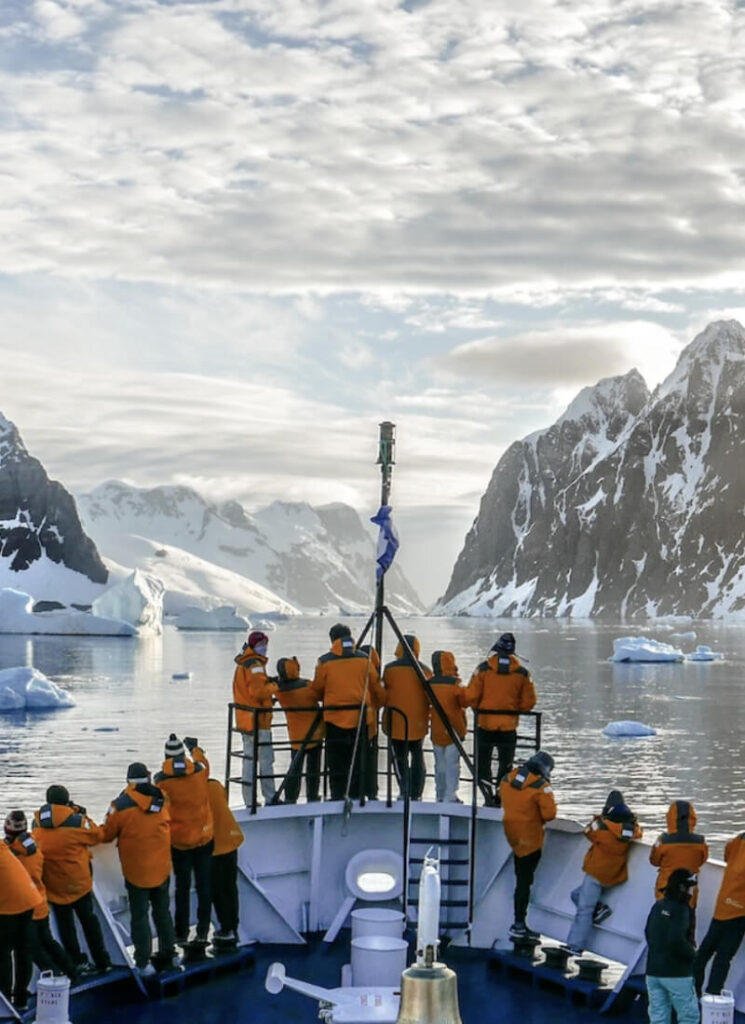
The Southern Ocean is vitally important in the entire Antarctic food web, and at the base of this web are two tiny players: phytoplankton and the krill that eat it. Krill are 85 or so species of small shrimp-like crustaceans (order Eucarida), the most abundant being the Antarctic krill (Euphausia superba), which can reach 10,000 – 30,000 individual animals per cubic meter.
Krill are thought to be one of the most successful animal species on the planet. Their ecological role is essential to Antarctica in that almost all Antarctic consumers rely directly or indirectly on them as a food source. It is amazing to think that the largest animal on the planet, the blue whale, feeds exclusively on krill! The populations of krill and all other Antarctic animals are crucially linked.
So how does this intricate food web work?
 During the summer months in the Southern Ocean, there are sufficient nutrients in the surface waters to support huge blooms of marine plants. Add in the almost continual sunlight during long summer days, and you have the perfect conditions for phytoplankton. These microscopic marine plants, mostly one-celled diatom, can reproduce and double its population every few hours, with the right conditions. Once the diatom bloom has begun, the krill take their part.
During the summer months in the Southern Ocean, there are sufficient nutrients in the surface waters to support huge blooms of marine plants. Add in the almost continual sunlight during long summer days, and you have the perfect conditions for phytoplankton. These microscopic marine plants, mostly one-celled diatom, can reproduce and double its population every few hours, with the right conditions. Once the diatom bloom has begun, the krill take their part.
Krill feed constantly on the tiny plants, and at times the Antarctic waters look pinkish-red from their huge population clusters.
Penguins, seals and baleen whales all feed on krill as their staple food. Above them, leopard seals and orca feed on the penguins and seals, connecting the entire food web back to the these small, shrimp-like animals.
Krill At-A-Glance
- Actual size: your pinky finger (about 2.5 inches)
- Color: transparent with red shells
- Population: ~500 million in the Southern Ocean
- Lifespan: Up to 10 years (average: 6)
- Its is being debated that Krill oil is better for you that Fish oil!









